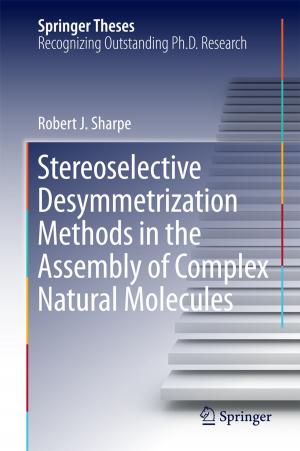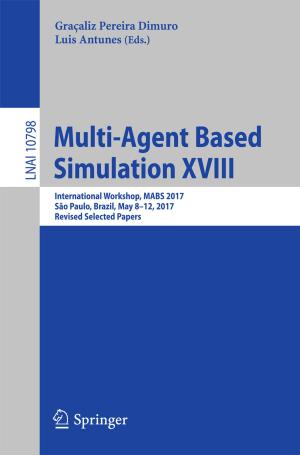Aquifer Test Solutions
A Practitioner’s Guide with Algorithms Using ANSDIMAT
Nonfiction, Science & Nature, Science, Biological Sciences, Environmental Science, Earth Sciences| Author: | Leonid N. Sindalovskiy | ISBN: | 9783319434094 |
| Publisher: | Springer International Publishing | Publication: | December 1, 2016 |
| Imprint: | Springer | Language: | English |
| Author: | Leonid N. Sindalovskiy |
| ISBN: | 9783319434094 |
| Publisher: | Springer International Publishing |
| Publication: | December 1, 2016 |
| Imprint: | Springer |
| Language: | English |
This book, designed as a handbook, provides a systematic treatment of analytical solutions describing groundwater flow during aquifer tests. The book integrates the majority of known solutions from well hydraulics and subsurface flow theory, starting with pioneering work from the early 20th century up to the most recent publications in scientific journals. The book includes about 300 transient solutions covering a wide range of aquifer test scenarios and hydrogeological conditions. All the solutions have been thoroughly tested and implemented in the multifunctional ANSDIMAT software. The book comprises three parts and is supplemented by appendices.
The first part of the book is dedicated to basic analytical relationships referring to pumping tests with constant discharge rate. Conceptual models describe confined, unconfined, confined–unconfined, inhomogeneous, and fracture-porous aquifers, as well as leaky aquifers and multi-layer aquifer systems. Complicating factors such as flow boundaries, aquifer anisotropy, non-uniform aquifer thickness, partial well penetration, wellbore storage and skin, the effect of capillary forces are also considered.
The second part focuses on complex pumping test settings and well system configurations. Analytical solutions are presented for pumping from a horizontal or inclined well, constant-head tests, multi-well variable-discharge tests, simultaneous pumping from adjacent aquifers and dipole flow tests. Detailed descriptions are given for slug and recovery tests.
The third part of the book contains algorithms for evaluating hydraulic characteristics using analytical and graphical methods, and is supplemented by the ANSDIMAT tool. This software includes solutions for some practical engineering-hydrogeological problems, in particular, the assessment of aquifer characteristics by data on groundwater level monitoring and the evaluation of water inflow into open pits.
The book is supplemented with appendices in which hydrogeologists can find a vast body of useful information including mathematical descriptions of the majority of analytical functions used in the book, their plots and possible approximations.
Audience:
The book is useful for hydrogeologists (students, engineers and researchers) engaged in groundwater flow studies, aquifer test analysis, environmental geologists and civil engineers. Experts in water flow numerical modeling and programmers developing software for aquifer tests will find valuable information in this book, which can also be used for educational and research purposes.
This book, designed as a handbook, provides a systematic treatment of analytical solutions describing groundwater flow during aquifer tests. The book integrates the majority of known solutions from well hydraulics and subsurface flow theory, starting with pioneering work from the early 20th century up to the most recent publications in scientific journals. The book includes about 300 transient solutions covering a wide range of aquifer test scenarios and hydrogeological conditions. All the solutions have been thoroughly tested and implemented in the multifunctional ANSDIMAT software. The book comprises three parts and is supplemented by appendices.
The first part of the book is dedicated to basic analytical relationships referring to pumping tests with constant discharge rate. Conceptual models describe confined, unconfined, confined–unconfined, inhomogeneous, and fracture-porous aquifers, as well as leaky aquifers and multi-layer aquifer systems. Complicating factors such as flow boundaries, aquifer anisotropy, non-uniform aquifer thickness, partial well penetration, wellbore storage and skin, the effect of capillary forces are also considered.
The second part focuses on complex pumping test settings and well system configurations. Analytical solutions are presented for pumping from a horizontal or inclined well, constant-head tests, multi-well variable-discharge tests, simultaneous pumping from adjacent aquifers and dipole flow tests. Detailed descriptions are given for slug and recovery tests.
The third part of the book contains algorithms for evaluating hydraulic characteristics using analytical and graphical methods, and is supplemented by the ANSDIMAT tool. This software includes solutions for some practical engineering-hydrogeological problems, in particular, the assessment of aquifer characteristics by data on groundwater level monitoring and the evaluation of water inflow into open pits.
The book is supplemented with appendices in which hydrogeologists can find a vast body of useful information including mathematical descriptions of the majority of analytical functions used in the book, their plots and possible approximations.
Audience:
The book is useful for hydrogeologists (students, engineers and researchers) engaged in groundwater flow studies, aquifer test analysis, environmental geologists and civil engineers. Experts in water flow numerical modeling and programmers developing software for aquifer tests will find valuable information in this book, which can also be used for educational and research purposes.















